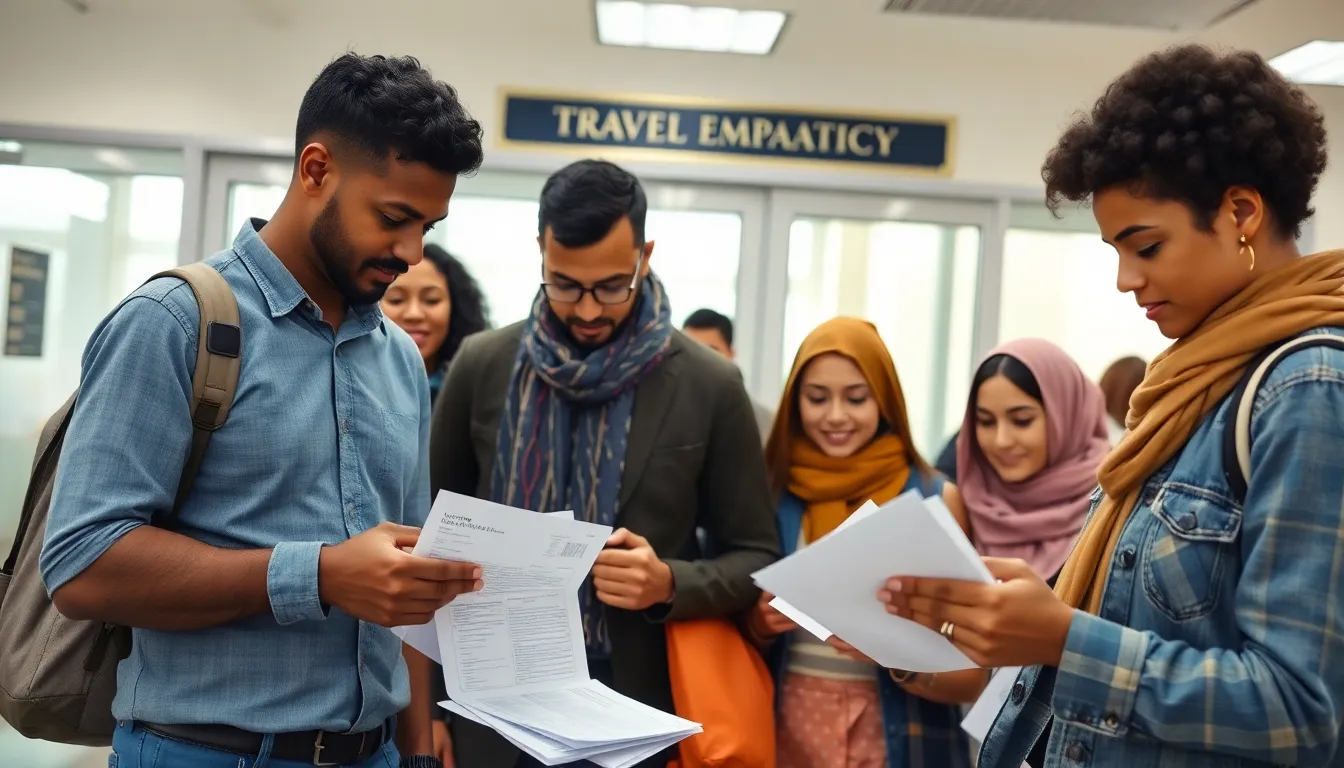Navigating the world of travel visas can feel overwhelming, especially for those planning their first international trip. These essential documents serve as gateways to new countries, allowing travelers to explore diverse cultures and experiences. Understanding the types of visas available and the application process is crucial for ensuring a smooth journey.
From tourist visas to work permits, each category comes with its own set of rules and requirements. Whether it’s a short getaway or a long-term adventure, knowing the ins and outs of travel visas can save time, money, and unnecessary stress. As global travel continues to evolve, staying informed about visa policies is more important than ever.
Table of Contents
ToggleUnderstanding Travel Visas
Travel visas are official documents that permit entry into a specific country for a defined period. They serve various purposes, such as tourism, work, or study, and carry specific requirements.
What Is a Travel Visa?
A travel visa is an endorsement placed in a passport, granting permission for a foreign national to enter, remain, or leave a country. It often details the duration of stay and the reasons for entry, ensuring that authorities can regulate who enters their borders.
Types of Travel Visas
Travel visas fall into several categories based on their purpose. Key types include:
- Tourist Visa: This visa allows travelers to visit a country for leisure, usually valid for short stays, often ranging from 30 days to 90 days.
- Business Visa: This visa enables individuals to conduct business activities, such as attending meetings or conferences, typically allowing for short stays.
- Work Visa: This visa permits foreign nationals to work in a host country, often linked to specific job offers and valid for the duration of employment.
- Student Visa: This visa allows individuals to study at educational institutions abroad, usually requiring proof of enrollment and financial means.
- Transit Visa: This visa is required for travelers passing through a country to reach their final destination, generally valid for short periods.
Understanding these visa types helps in choosing the right one for specific travel needs.
The Application Process

The travel visa application process involves several essential steps to ensure compliance with a country’s entry requirements. Proper preparation streamlines this process and enhances the likelihood of approval.
Preparing Your Application
Preparing the application involves gathering necessary documents and information. Applicants must complete a visa application form specific to the destination country’s requirements. Applicants should ensure they access the official government website for accurate form details. Collect essential documents, including a valid passport, recent photographs, and proof of travel itinerary. Consult the destination’s consulate or embassy for any unique requirements, such as medical insurance or financial statements. Applicants must also pay attention to application submission methods, whether online or in-person, and adhere to any deadlines.
Common Requirements
Common requirements for travel visas vary by country but generally include the following:
- Passport: Valid for at least six months beyond the intended stay.
- Application Fee: Paid in the destination country’s preferred currency.
- Photographs: Recent passport-size images meeting specific guidelines.
- Proof of Accommodation: Hotel bookings or invitation letters from hosts.
- Travel Insurance: Coverage for medical emergencies may be necessary.
- Financial Statements: Proof of sufficient funds for the duration of the stay.
- Travel Itinerary: Details of planned travel, including entry and exit dates.
Meeting these common requirements ensures a smoother application process and compliance with visa regulations.
Travel Visa Tips
Understanding travel visa tips can elevate the travel experience. Proper knowledge helps avoid common pitfalls during the application process.
Checking Visa Policies
Checking visa policies is crucial before planning international travel. Countries have diverse requirements that vary by nationality and purpose of travel. Travelers need to review the specific visa policies on the official government website of the destination country. This website typically outlines necessary documentation, eligibility criteria, and processing times. Utilizing resources like the International Air Transport Association (IATA) can provide up-to-date information about visa requirements based on citizenship. Regularly confirming policies ensures compliance and smooth entry into a country.
Handling Visa Denials
Handling visa denials requires careful steps to address issues effectively. If a visa application receives a denial, travelers need to review the official refusal letter to understand the reasons behind the decision. Common reasons for denial include incomplete applications, insufficient documentation, or failure to meet eligibility criteria. Addressing the issues identified in the denial is crucial before reapplying. Gathering additional supporting documents and possibly seeking legal advice can enhance the chances of a successful application on a subsequent attempt. Staying informed about specific requirements and maintaining open communication with consular officials may also facilitate a favorable outcome.
Popular Destinations and Their Visa Requirements
Understanding visa requirements is essential when planning international travel. Here are some popular destinations and their specific visa regulations.
North America
Travelers heading to North America often require a visa, depending on their nationality. The United States offers several visa types:
- Tourist Visa (B-2): Required for travelers intending to visit for leisure. Applicants must provide a valid passport, proof of accommodation, and financial statements.
- Business Visa (B-1): Necessary for individuals conducting business. Evidence of the purpose, like invitations from US-based companies, is essential.
- ESTA (Electronic System for Travel Authorization): Citizens from Visa Waiver Program (VWP) countries can enter for up to 90 days without a visa by obtaining ESTA online.
Canada generally requires a visa or Electronic Travel Authorization (eTA) for entry:
- Visitor Visa: Mandatory for many travelers, with requirements that include proof of funds and travel plans.
- eTA: Available for visa-exempt travelers arriving by air, it simplifies the entry process.
Europe
Visa requirements vary widely across Europe. The Schengen Area simplifies travel among 27 European countries with a single visa type:
- Schengen Visa: A short-stay visa allowing up to 90 days for tourism or business. Necessary documents include a passport, travel insurance, and accommodation proof.
Some countries offer different requirements:
- United Kingdom: A standard visitor visa is required for stays exceeding six months. Applicants must present a valid passport, financial evidence, and accommodation details.
- Ireland: No Schengen visa is needed, but a visa may be required based on nationality and purpose of visit.
Remaining informed about the specific visa regulations for each country ensures travelers can navigate entry requirements effectively.
Navigating the world of travel visas can seem daunting but understanding the requirements and processes is key to a successful trip. By staying informed about different visa types and their specific regulations travelers can avoid unnecessary delays and complications. Preparing the necessary documentation and following application guidelines ensures a smoother experience.
As travelers explore new destinations they should remember that each country has unique entry requirements. Utilizing reliable resources and seeking assistance when needed can make the visa process less stressful. With the right preparation and knowledge travelers can embark on their journeys with confidence and ease.





